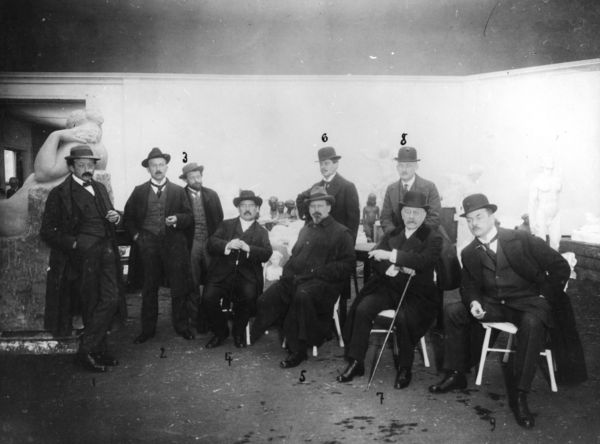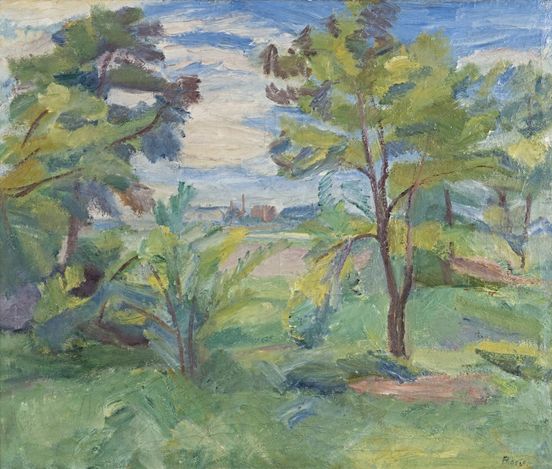| Genre | Painting |
| Materials | Oil on canvas |
| Size | 85 x 101 cm |
| Signature | signed bottom right: Rösler |
Restored with the support of the Ernst von Siemens Kunststiftung
Research status
Provenance is established. The work does not qualify as a cultural asset extorted due to Nazi persecution.
The end of a promising career
“The war has ripped a new, the cruellest of gaps in the ranks of Berlin’s young painters. […] Memories are still fresh of that exhibition by the Berlin Secession where a big, spring-bright landscape made the name of its young artist known to broad circles. […] Rösler had a lyrically disposed nature. He sought the soft moods in a landscape, he explored the rough charms of suburban streets, of bare fields and few-leaved trees in the cold light of late winter days, and here close to Berlin, in a western suburb where he had made his permanent home, he found the motifs best suited to his temperament.”
Waldemar Rösler †, in: Kunstchronik, Neue Folge, vol. 28, 1916/17, no. 14, 1 January 1917, p. 134
On 14 December 1916, as an officer in the First World War, Waldemar Rösler took his own life. He was only 34. In February 1917 Max Beckmann published an obituary to his fellow-artist, the Ferdinand Möller Gallery featured his works at its inaugural exhibition in Breslau (Wrocław), and Paul Cassirer’s gallery in Berlin dedicated a memorial exhibition to him with about 60 paintings. Rösler had been a member of the Berlin Secession since 1909 and had served on its committee since 1911 along with Max Slevogt, Lovis Corinth and Max Liebermann. The artist had a promising career ahead of him.

In 1911 Waldemar Rösler was on the jury for the Berlin Secession exhibition. Left to right: Karl Walser, Waldemar Rösler, Ernst Barlach, Lovis Corinth, August Kraus, Hans Baluschek, George Mosson, Konrad von Kardorff and Robert Breyer
Jury for the Berlin Secession exhibition, 1911
© Bundesarchiv, Bild 183-1985-0614-502 / Fotograf(in):o. Ang.Rösler preferred landscapes, but his œuvre included group portraits and still life. His scenes suffused with light betray an Impressionist technique, as in “Landscape with Acacias”. Although Rösler’s art, especially his themes, seems only moderately modern, the Nazis declared his art to be “degenerate”. Three of his paintings were confiscated from various German museums in 1937.
About 200 paintings by Waldemar Rösler were destroyed at the end of the war at the Schildeck estate in East Prussia where his wife Oda Hardt (1880–1965) was born. “Landscape with Acacias” stayed with the family and was purchased in 1984 from the artist’s daughter, Louise Rösler.
